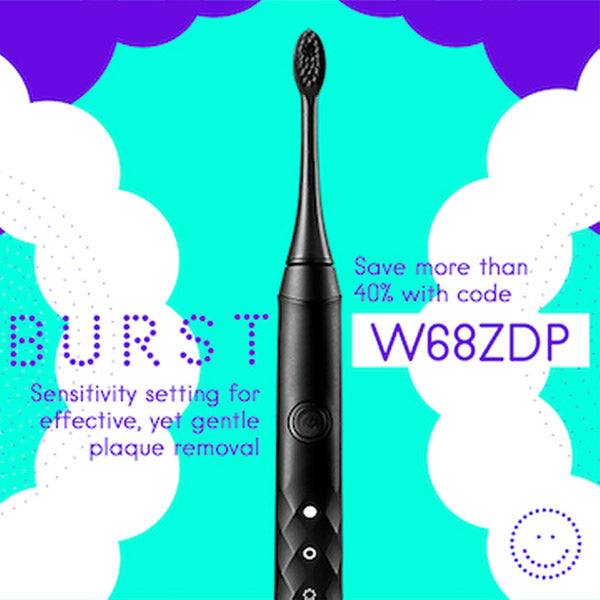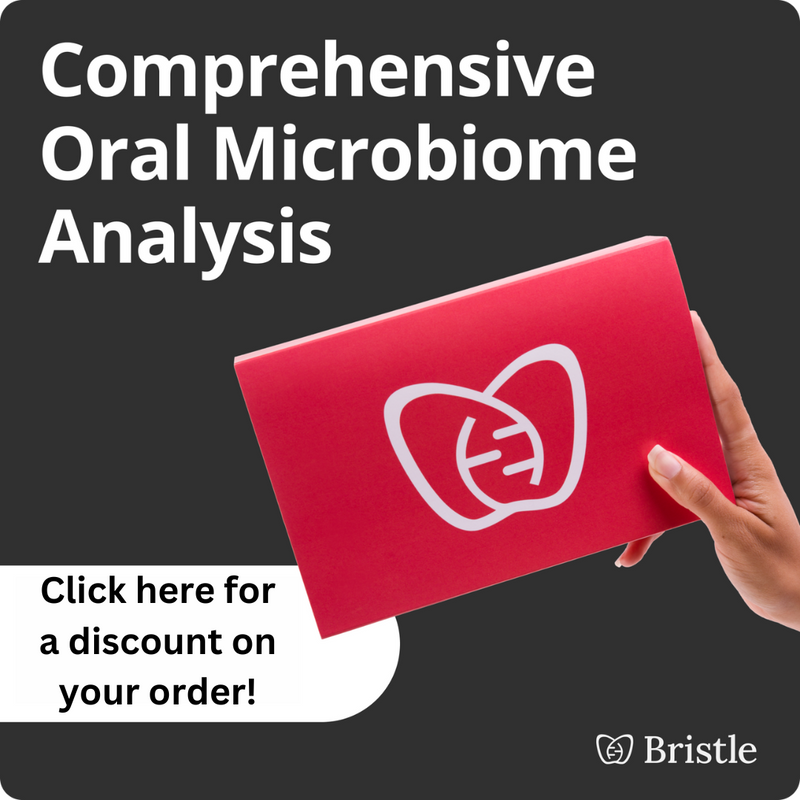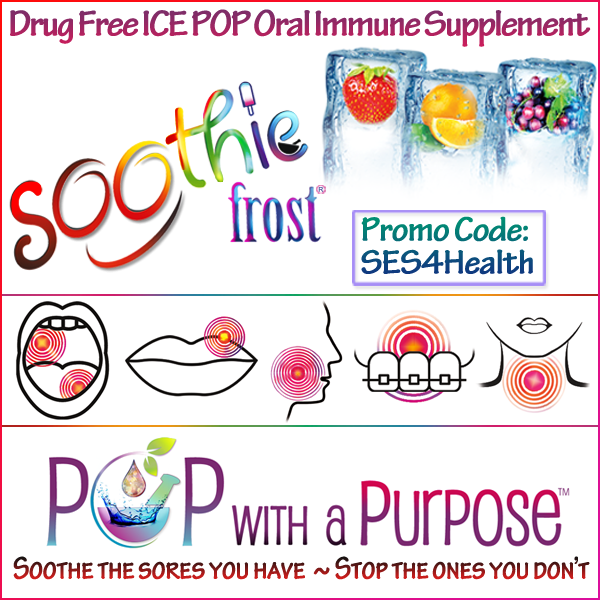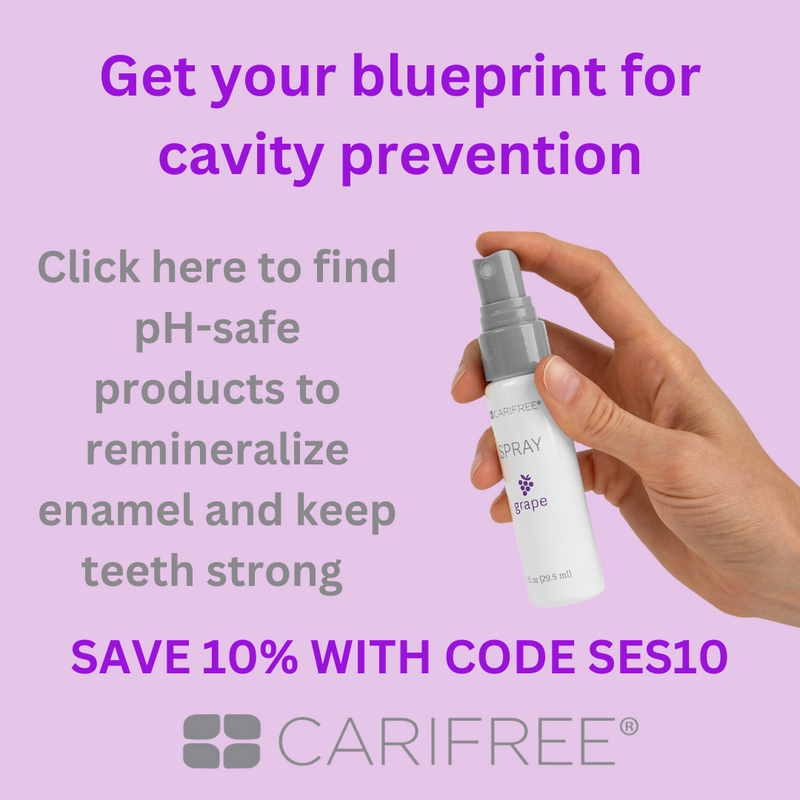Oral Care Probiotics – The Missing Piece of the Puzzle?

The word ‘probiotic’ means in favor of life. Probiotics are dose dependent against the strains they target (meaning if the dose changes, the effects change), and must benefit the host when used in adequate amounts.1 Probiotics must be used in concentrated doses because they can become ineffective under normal clearance activities. These doses are measured in CFU’s (Colony Forming Units)
The connection between mouth health and overall body health has been well established. If we can maintain a normal oral microbiome, we remain healthier overall. The oral cavity is highly populated with microbes that form a community. Each microbe has a specific position that varies in their location and what nutrients they need. Some are more virulent than others, some are more resistant to therapies and there are some genetic variables. They compete with other pathogens to attach in the mouth and receive their nutrients from saliva.2 One thing they all have in common is either a direct or indirect effect on the host inflammatory response and another is the ability to repopulate. The natural balance of beneficial bacteria can be altered by diet, stress, medications, illness and many other factors.
Saliva is an important component of the oral microbiome, having a lot of influence over which pathogenic species persist in the mouth and which ones are cleared. Saliva also buffers the organic acids that are naturally produced by bacterial metabolism and saliva carries proteins to repair acid damaged tooth enamel. In persons experiencing dry mouth for whatever reason, this becomes a consideration.
Oral care probiotics are derived from the oral cavity of healthy individuals and antagonize S. Mutans and P. Gingivalis. As a group they are more useful than just one strain by itself.3 Oral care probiotics are strain specific to tissue health. By increasing amounts of Strep Oralis and Strep Uberis they will crowd out the aggressive periodontal pathogens like P. Gingivalis. Oral care probiotics contain a unique strain of Strep Rattus that does not produce lactic acid. Strep Rattus competes for space and nutrients with Strep Mutans, which does produce lactic acid and is responsible for dissolving tooth structure causing dental decay.4 L. Reuteri, which is primarily found in the GI tract, is used in oral care probiotics for its collaborative properties in fighting both decay and periodontal pathogens.5 S. Salivarius is another strain often used because it reduces the number of bacteria that produce Volatile Sulphur Compounds that are behind bad breath.6
We’ve been using probiotics for decades. They occur naturally in foods and water, or are intentionally added, are naturally passed down from mother’s milk and are a part of our daily diet. Without them humans could not survive.
Oral care probiotics can be used to continue positive management of disease. In addition to daily brushing and interdental cleaning, they can be an effective option in maintaining a healthy mouth. In published studies, oral care probiotic therapy can be beneficial in managing active decay and reducing the future risk of decay by use for just one month.7 Studies also show that the effects on the oral microbiome were measurable even three years later.8 They are safe for use with dental appliances – aligner trays, night guards, sleep apnea appliances, veneers and restored implants. Oral care probiotics do not cross the placenta and are safe to use in pregnancy, infancy and later years.
Most probiotics are made with non-GMO ingredients and are wheat, soy and gluten free. Most are sugar free as well, using xylitol or erythritol as a significant ingredient. Probiotics are classified by the FDA as dietary supplements or food, and are on the GRAS list. Because probiotics are largely unregulated, attention needs to be paid to the ingredients and sources as well as the specific strains they contain. Oral care probiotics could contain the correct species, but incorrect strain for what the oral microbiome is missing. Probiotics are commonly viewed as a safer, more effective alternative, carrying fewer health risks than standard medications. Many patients regard probiotics as ‘alternative medicine’ and believe no professional guidance is required. This way of thinking can lead to individuals over estimating the benefits and under estimating the risks associated with improper dosage.
Are probiotics the future? These beneficial microbes can also be used to treat a wide range of clinical conditions that have been linked to oral pathogens. Many gastrointestinal issues like Irritable Bowel Syndrome, Inflammatory Bowel Disease, Ulcerative Colitis, and Crohn’s are often treated with probiotics. P. Gingivalis is found to be present in 61% of esophageal cancers and increase the incidence of pancreatic cancer two fold.9 Patients that are currently receiving cancer treatment can benefit from oral care probiotics because the oral infections that occur alongside treatment can be counterproductive to the effectiveness of their cancer therapy.** Patients with co-morbidities like Type 1 Diabetes, Rheumatoid Arthritis, Cardiovascular Disease or High Cholesterol benefit from eliminating yet another inflammatory response within their body.10,11 Antiviral medications taken by immunocompromised patients can cause decay and dry mouth. The four main comorbidities associated with heightened risks of complications and death from Covid-19 also are linked with altered oral biofilms and periodontal disease. This suggests a possible connection between poor oral health and the severity of Sars-Cov-2 infections.12 All patients need to actively pursue an optimal oral environment during a health crisis.
With the increase in antibacterial resistance of many infections, probiotics are more and more being considered as a first line of defense. Oral care probiotics could very well be the missing piece of the puzzle when a dental patient fails to respond to other more traditional therapies. By learning more, we can effectively discuss probiotic use and offer patients adjuncts and alternatives to improving their dental health.
**Consult with your oncologist prior to introducing any supplement or over-the-counter medication into your routine.

About the Author:
Kris Potts, BS, FAADH, RDH is a member of the American Dental Hygienists’ Association, a Fellow and accredited Provider with the American Academy of Dental Hygiene and member of the American Academy for Oral Systemic Health. After achieving additional certifications in Caries Management, Sleep Care Coordination and Oncology Care, she acts as a Key Opinion Leader in the dental industry. Kris is a published author, international speaker and been interviewed numerous times for her expertise. She is Owner/CEO of Oral Health Promotion Strategies, providing resources, product information, education and coaching services for health professionals, consumers, advocacy and support groups.
www.oncologyprehabilitation.
REFERENCES
1 Hotel, A. C. P., & Cordoba, A. (2001). Health and nutritional properties of probiotics in food including powder milk with live lactic acid bacteria. Prevention, 5(1), 1-10.
2 Bonifait, L., Chandad, F., & Grenier, D. (2009). Probiotics for oral health: myth or reality?. Journal of the Canadian Dental Association, 75(8).
3 https://www.frontiersin.org/article/10.3389/fmicb.2018.03323 DOI=10.3389/fmicb.2018.03323
4 Hillman JD, McDonell E, Cramm T, Hillman CH, Zahradnik RT. A spontaneous lactacte dehydrogenase deficient mutant of Streptococcus rattus for use as a probiotic in the prevention of dental caries. Journal of Applied Microbiology 2009 Nov;107(5):1551-8. Epub 2009 Apr
5 Vivekananda M.R., Vandana K.L. & Bhat K.G (2010) Effect of the probiotic Lactobacilli reuteri (Prodentis) in the management of periodontal disease: a preliminary randomized clinical trial, Journal of Oral Microbiology, 2:1, DOI: 10.3402/jom.v2i0.5344
6 Burton J, Chilcott C, Moore C, Speiser G, Tagg J. A preliminary study of the effect of probiotic Streptococcus salivarius K12 on oral malodour parameters. J Appl Microbiol. 2006; 100: 754-764
7 Cannon M, Vorachek A, Le C, White K. Retrospective Review of Oral Probiotic Therapy. J Clin Pediatr Dent. 2019; 43(6): 367-371. doi 10.17796/1053-4625-43.6.1
8 Cannon ML. A Review of Probiotic Therapy in Preventive Dental Practice. Probiotics Antimicrobial Proteins. 2011; 3(2): 63-7
9 Jacob JA. Study Links Periodontal Disease Bacteria to Pancreatic Cancer Risk. JAMA. 2016;315(24):2653–2654. doi:10.1001/jama.2016.6295
10 https://www.dentalproductsreport.com/view/oral-care-probiotics-supplement-overall-health-practices
11 Saini R, Saini S, Sharma S. Potential of probiotics in controlling cardiovascular diseases. J Cardiovasc Dis Res. 2010; 1(4):213–214. doi:10.4103/0975-3583.74267
12 Sampson, V., Kamona, N. & Sampson, A. Could there be a link between oral hygiene and the severity of SARS-CoV-2 infections?. Br Dent J 228, 971–975 (2020). https://doi.org/10.1038/s41415-020-1747-8




